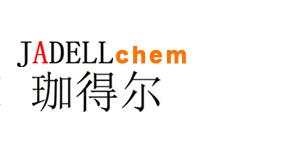Recombinant Human I-309/CCL1 通过与细胞表面的CCR8趋化因子受体相互作用,吸引单核细胞、自然杀伤细胞、未成熟的B细胞核树突状细胞。
Synonyms
rHuI-309/CCL1; C-C motif chemokine 1; SCYA1 ; 重组人I-309/CCL1
Species
HumanSource
E. coli Accession
P22362 Gene ID
6346 Molecular Weight
Approximately 8.5 kDa AA Sequence
SKSMQVPFSR CCFSFAEQEI PLRAILCYRN TSSICSNEGL IFKLKRGKEA CALDTVGWVQ RHRKMLRHCP SKRK Biological Activity
The ED50 is <1 μg/mL as measured by CHO-K1/Gα15/hCCR8 cells (human Gα15 and human CCR8 stably expressed in CHO-K1 cells). Appearance
Lyophilized powder. Formulation
Lyophilized after extensive dialysis against PBS. Endotoxin Level
<0.2 EU/μg, determined by LAL method. Reconstitution
Reconstitute the lyophilized recombinant Human I-309/CCL1 (rHuI-309/CCL1) to 100 μg/mL using ddH2O or PBS. Storage & Stability
Lyophilized recombinant Human I-309/CCL1 (rHuI-309/CCL1) is stored at -20°C. After reconstitution, it is stable at 4°C for 1 week or -20°C for longer. It is recommended to freeze aliquots at -20°C or -80°C for extended storage. Shipping
Room temperature in continental US; may vary elsewhere. Background
Human I-309/CCL1 is a monocytec hemoattractant[1]. CCL1 attracts monocytes, NK cells, and immature B cells and dendritic cells by interacting with a cell surface chemokine receptor called CCR8. The CC chemokine I-309 is the only agonist that selectively induced intracellular Ca2+ mobilization and chemotaxis in receptor-transfected 300-19 cells. TER1 (ChemR1 or CKR-L1) is the receptor for I-309, and we propose to call this receptor CCR8 in agreement with the current nomenclature for chemokine receptors[2]. |



